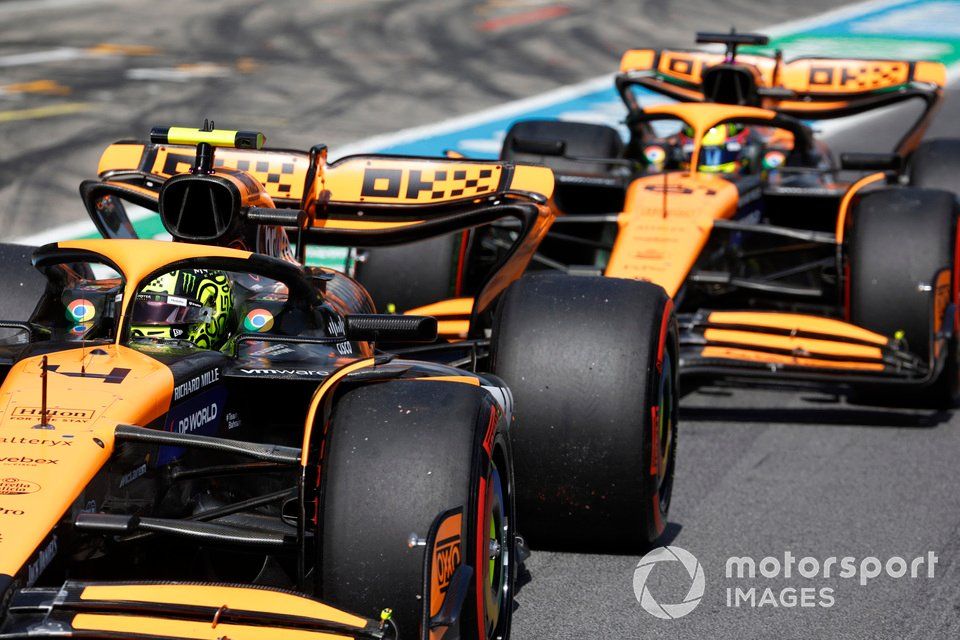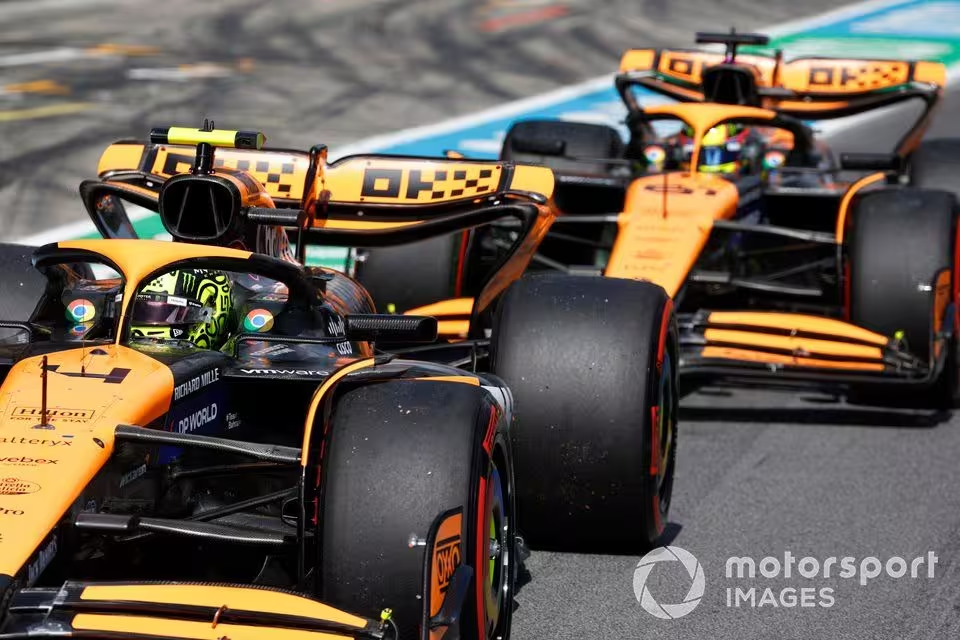McLaren has found itself at the centre of technical intrigue ahead of Formula 1’s Hungarian Grand Prix over a trick some think could have helped improve its tyre temperature management.
As first revealed by German publication Auto Motor Und Sport, the design of McLaren’s brake drums recently grabbed the attention of main rival Red Bull, which is understood to have lodged some questions with the FIA about what its competitor was up to.
The issue at stake is a small hole that has been spotted on the rear brake drums of the MCL38.
The theory of its competitor is that the hole potentially allows McLaren to boost airflow between the brake drum and the wheel – which can provide advantages in both qualifying and the race in ensuring temperatures do not get too extreme.
F1 teams have long battled to find ways to ensure that the heat generated by the brakes inside the drum is controlled, and does not contribute to the tyres overheating and falling outside their operating windows.
Teams make use of double baskets to try to isolate the tyres from the heat source of the brakes.
Watch: Why Red Bull’s Domination is Potentially Over – F1 2024 Hungarian Grand Prix Preview
A first carbon cover goes around the brake calliper and disc, which has specific ducts that extract the hot air towards an outlet that exits behind the brake ducts.
The second basket acts as a buffer, with a cavity created between the wheel and the first drum where fresh air can be channelled to help cool things down.
A hole in this outer channel would allow this flow of fresh air to blow out towards the wheel rim – aiding cooling.
The main issue, however, is that such holes are not strictly allowed in the regulations because there is a demand that the drum has a ‘continuous’ surface.
Article 3.13.2 of F1’s Technical Regulations states: “For each drum, a circumferential, continuous (around an arc of 360°), and uniform aerodynamic seal must be fitted in the outboard of the two annotated volumes, in order to prevent any significant aerodynamic or heat transfer flow between the drum and the axle.”
But the presence of the hole is not necessarily against the rules, because it has been suggested it is utilised as a way to allow McLaren access to sensors that are used to monitor drum and wheel temperatures in practice.

Lando Norris, McLaren MCL38, Oscar Piastri, McLaren MCL38, in the pit lane
Photo by: Steven Tee / Motorsport Images
F1’s regulations allow teams to…
Click Here to Read the Full Original Article at Autosport.com – Formula 1 – Stories…

